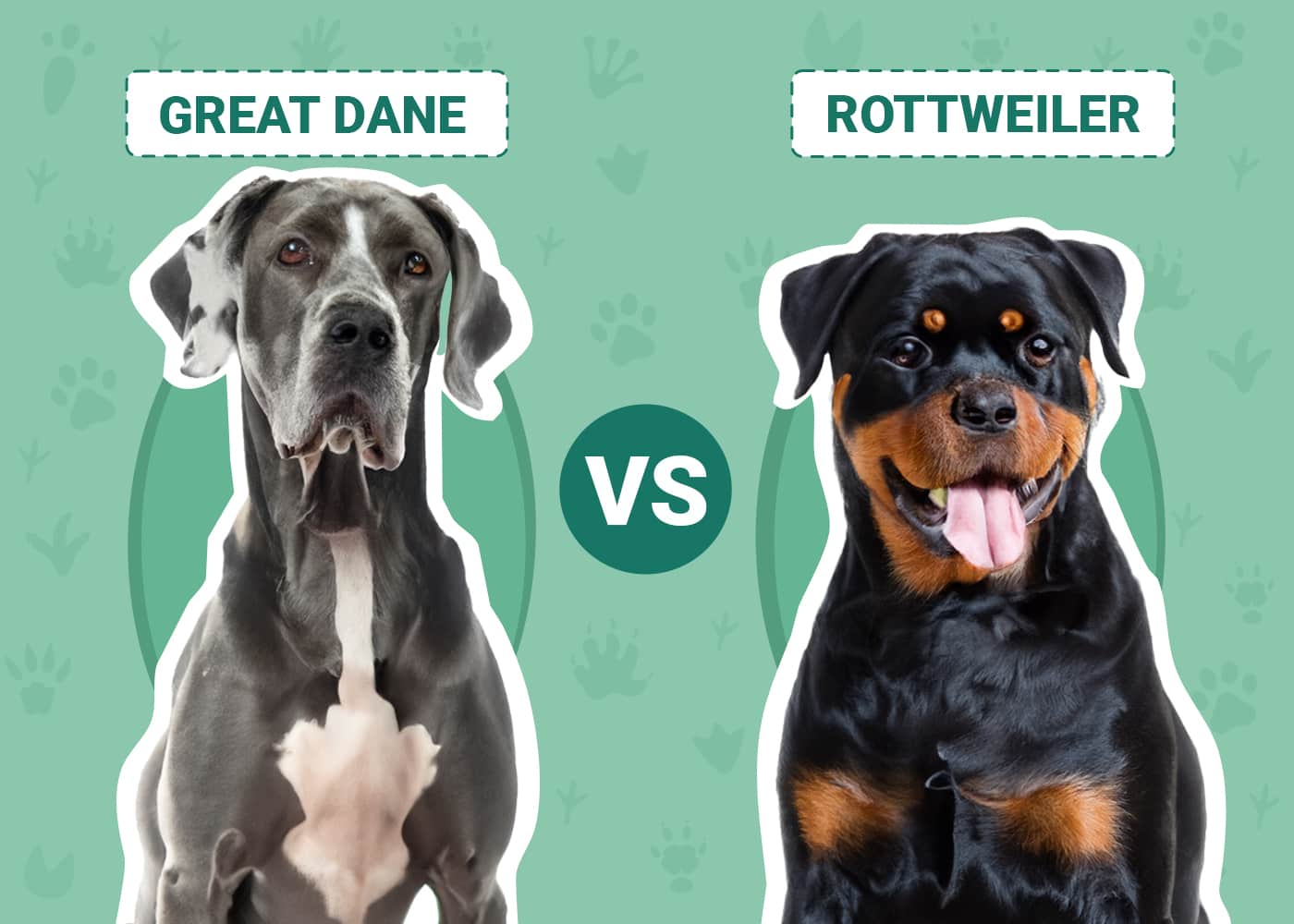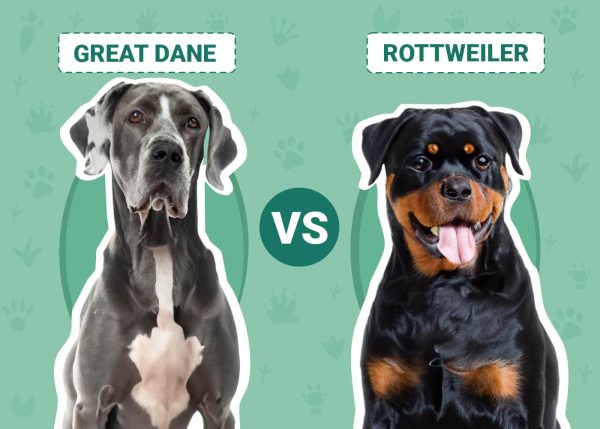Click to Skip Ahead
If you’re in the market for a big dog, you may have come across Rottweilers and Great Danes in your research. Both breeds can get extremely large, but there are some notable differences between them, so it’s important to consider these differences if you’ve narrowed down your dog search to these two breeds.
While Great Danes are known for their lovable goofiness, Rottweilers are loved for their loyalty and affection. While both are large, Great Danes can reach 200 pounds, while Rottweilers typically stay in the 100-pound range. One breed is tall and lean, while the other is shorter but with a heavy, stocky body. To choose between the two, you’ll need to consider their differences, so we’ve outlined them below to help you out.
Visual Differences
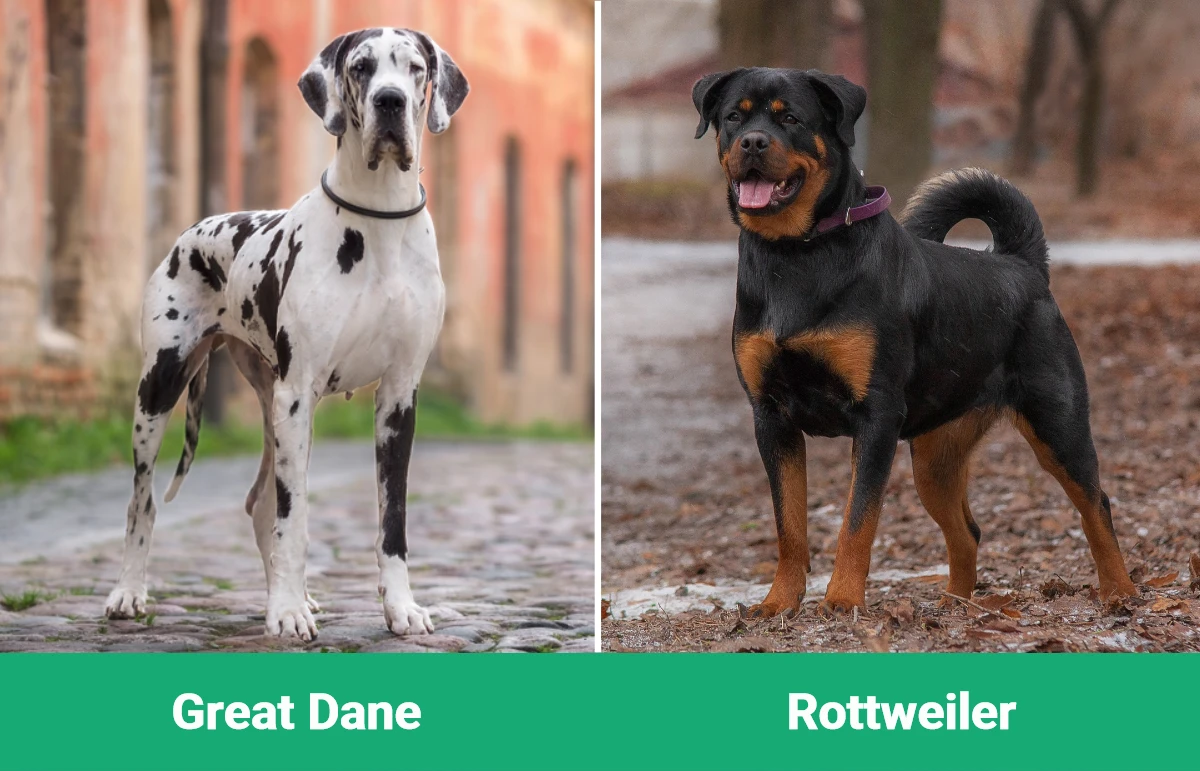
At a Glance
- Average height (adult): 28–35 inches
- Average weight (adult): 99–200 pounds
- Lifespan: 8–10 years
- Exercise: 2+ hours a day
- Grooming needs: Low
- Family-friendly: Yes
- Other pet-friendly: Often
- Trainability: Eager to please, sociable, people-oriented
- Average height (adult): 22–27 inches
- Average weight (adult): 77–130 pounds
- Lifespan: 8–10 years
- Exercise: 2+ hours a day
- Grooming needs: Low to moderate
- Family-friendly: Yes
- Other pet-friendly: Often
- Trainability: Intelligent, stubborn, confident
Great Dane Overview

Temperament
The Great Dane is known for its lovable temperament. They love people and are often considered good with children. They tend to be sociable and quite friendly, but appropriate socialization at a young age is vital to ensure the best temperament traits are brought forward. Without proper socialization, Great Danes can become jumpy and nervous.
Training
While Great Danes are eager to please, they can still pose some challenges with training. One issue that people may need to consider is how quickly these dogs grow. Have you ever tried to train a wild puppy weighing 50 pounds? Finding ways to maintain attention and turn training into an interesting game with high-value rewards is essential for keeping their attention and successfully training one of these silly dogs. They may be distractable during training, but they aim to please and generally respond well to training sessions.
Health & Care
As with all giant breed dogs, there are significant health considerations with the Great Dane. Great Dane puppies grow so quickly that they can develop issues with their joints and bones, so proper nutrition and exercise at a young age are necessary. Some health problems plague this breed, like dilated cardiomyopathy, bloat, and osteosarcoma. Proper breeding practices through responsible breeders are necessary to prevent these issues in future generations.
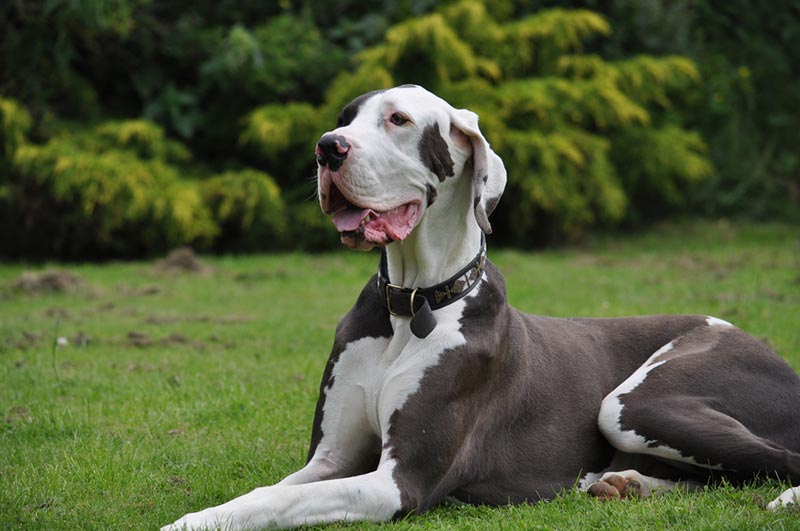
Suitable for:
Great Danes are typically considered to be suitable dogs for homes with children. They tend to be gentle giants, often loving the companionship of children. They can also do well with other animals, but it is important to socialize them while young. They do need quite a bit of exercise, so active households that are committed to providing their exercise needs are ideal.
Rottweiler Overview
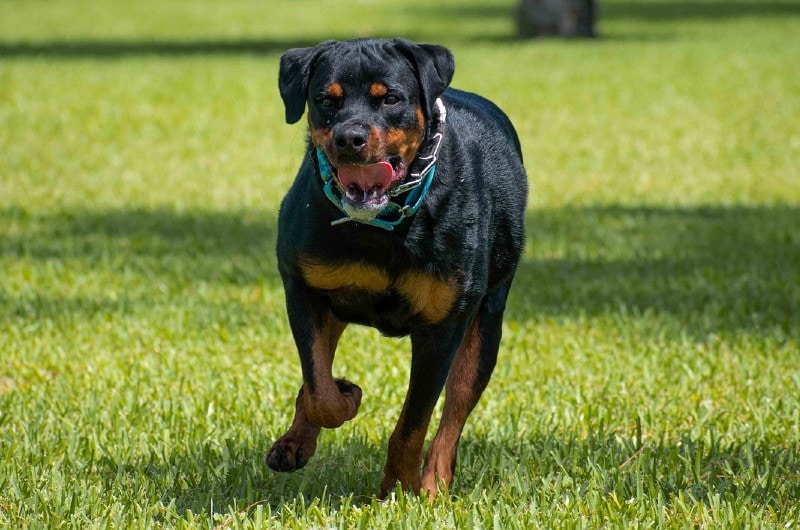
Temperament
The Rottweiler has achieved a reputation as an aggressive and dangerous dog, but this couldn’t be further from the truth for the people that love them. Rottweilers are incredibly loyal and protective dogs. They are often considered one of the best breeds to have with children because of their gentleness and loyalty. They tend to be aloof and distrust strangers, especially if they feel like their people are at risk.
Training
Due to the large size and strength of the Rottweiler, coupled with its protectiveness, it’s essential to provide appropriate socialization and training. Training should start at a young age. While they are intelligent dogs, they are wise enough sometimes to try to outsmart you. You must have a well-planned training regimen and high-value rewards to maintain the attention of a Rottweiler. They tend to be people pleasers, and that helps significantly with training.
Health & Care
Like Great Danes, the Rottweiler breed has some serious medical concerns, and most of them are being perpetuated by irresponsible breeders. They are at risk of hip and elbow dysplasia, injuries to their CCL, eyelid problems, aortic stenosis, and osteosarcoma. Maintaining a healthy body weight is vital for joint health, while routine veterinary checkups will help catch other health conditions early.
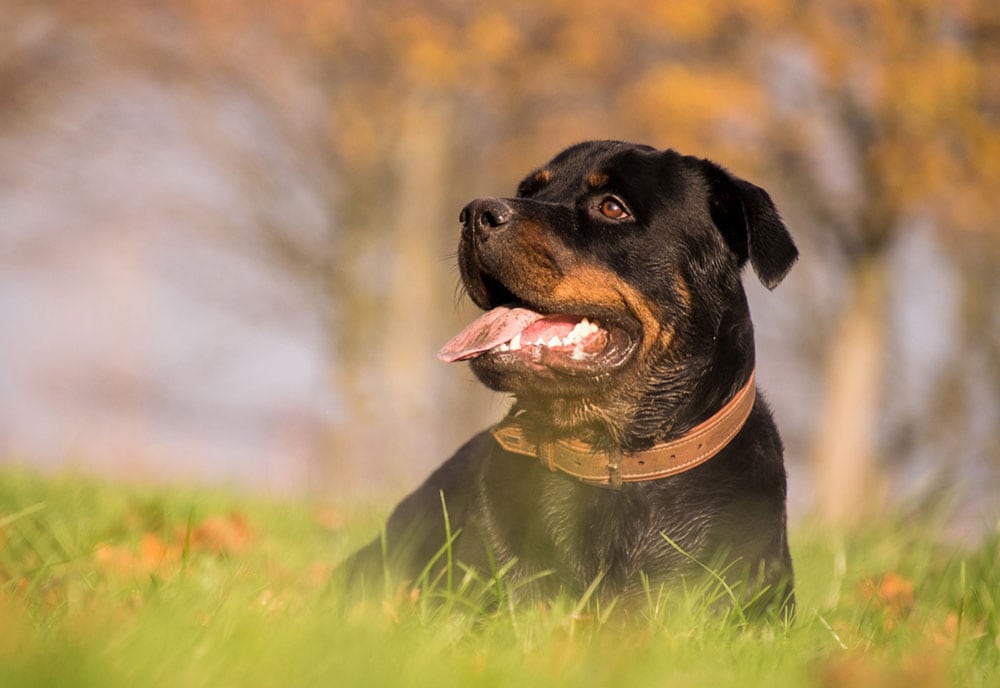
Suitable for:
Rottweilers are great pets for homes with children, but children should still be taught how to respect the dog’s boundaries. They require a lot of exercise, so they are best suited for active homes with plenty of outside time. This breed usually doesn’t enjoy being a couch potato, so be prepared for high-energy play sessions.
Which Breed Is Right for You?
Rottweilers and Great Danes are big dogs with loyal and loving temperaments. However, their personalities are pretty different. The aloof Rottweiler is excellent for protection work, while the sociable Great Dane is likely to become a friend to everyone. Both can do well with other animals, but proper introductions and socialization are necessary.
They are active breeds, but Great Danes are a little more willing to be couch potatoes than Rottweilers. The primary challenge with training Rottweilers is their high intelligence and tendency to try to outsmart you, while Great Danes can be goofy and distractable. Both breeds have significant health issues, but proper breeding can help eliminate many of these issues.
See Also:
- Kangal vs Great Dane: Which Should You Choose?
- Rottweiler vs. Rhodesian Ridgeback: Differences Explained (With Pictures)
Featured Image Credit: Top – BIGANDT.COM, Shutterstock | Bottom – RebeccasPictures, Pixabay

